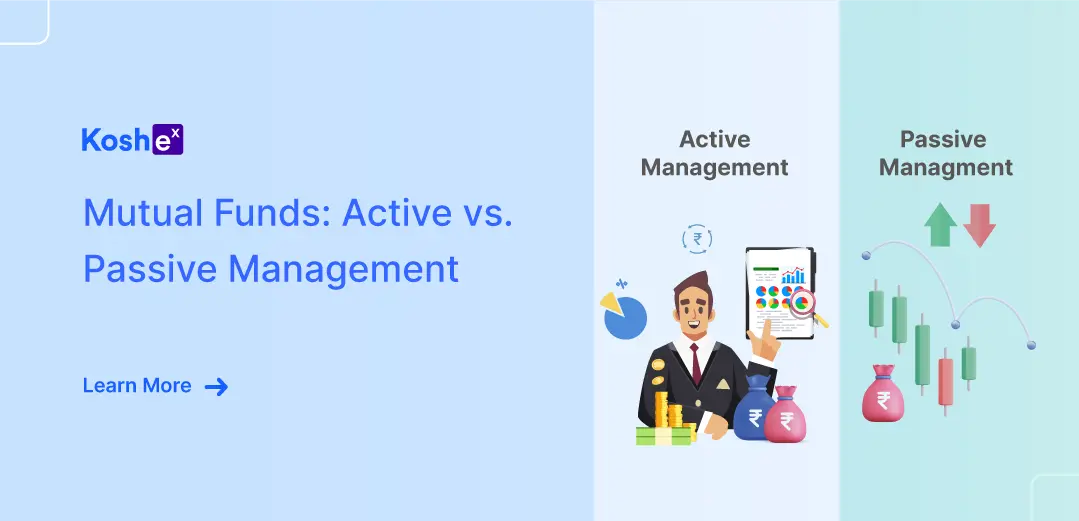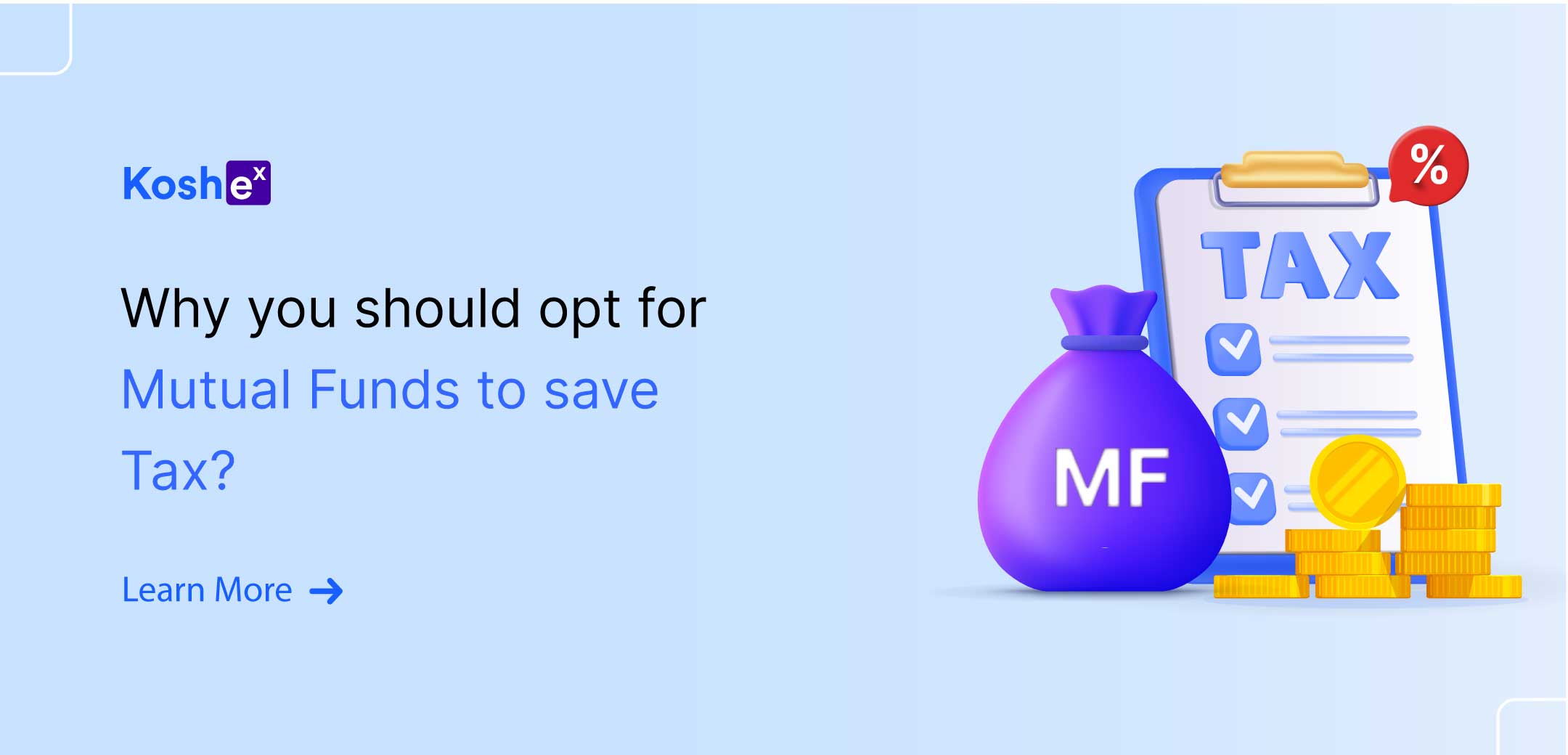Mutual funds are of various types and depending upon how they are managed, we can bifurcate them into two categories i.e., actively managed and passively managed mutual funds. When investing in mutual funds, one crucial decision investors face is choosing between Active and Passive Mutual Funds.
Each management style has its unique characteristics and benefits. Understanding them is important because they not only affect our returns but also compromise the risk and expense ratio. Let’s explore the differences between active and Passive Mutual Funds to enable you to make informed investment decisions with Koshex.
What is an Actively Managed Mutual Fund?
Actively Managed Mutual Funds are those in which the fund manager actively selects and manages the portfolio of securities to outperform a specific benchmark or achieve superior returns. The fund manager conducts research, and market analysis and uses their expertise to make investment decisions. Most Equity Funds are Actively Managed Mutual Funds.
What is a Passively Managed Mutual Fund?
Passive Mutual Funds, also known as Index Funds, aim to replicate the performance of a specific market index or benchmark. Instead of actively selecting individual securities, the fund manager’s role is to closely mirror the composition and weighting of the underlying index.
Difference Between Active and Passive Mutual Funds
While we saw the definition of Active and Passive Funds, it is important to understand the difference between the two to make informed investment decisions. Here’s how actively and passively managed funds are different from each other:
| Parameters | Actively Managed Mutual Funds | Passively Managed Mutual Funds |
| Investment Strategy | Actively Managed Mutual Funds select securities based on research and analysis of the fund manager. | Passively managed funds replicate the composition of a specific index and do not require much research by the fund manager. That’s why these are also called Index Funds. |
| Fund Manager’s Role | Fund manager actively makes investment decisions while managing actively managed funds. The manager is responsible for Buying and Selling Securities to minimize risk and maximize returns. | In the case of Passive Mutual Funds, the fund manager primarily focuses on portfolio replication based on the underlying index. |
| Goal | The goal of the fund manager here is to outperform the benchmark or Beat the Market to achieve superior returns for the investors. | The goal of the fund manager here is to achieve returns that closely match the underlying index and ensure that the fund composition is similar to the composition of the securities forming index. |
| Research and Analysis | Extensive research and analysis are conducted by the fund manager for managing the Actively Managed Mutual Funds. | Limited research is required on the part of the fund manager as the focus is on tracking the underlying index in the case of passively managed funds. |
| Expense Ratios | In the case of Actively Managed Mutual Funds, the expense ratio is high, as the funds are actively managed by the fund manager and it involves a lot of research and analysis. | Generally, the expense ratio is quite low in the case of passively managed funds due to the passive approach of the fund manager. The major task here is to replicate the underlying index. |
| Flexibility | The fund manager has more flexibility and ability to make tactical asset allocation changes based on market conditions and the performance of the assets. | The fund manager has limited flexibility in the case of passively managed funds due to the goal of tracking the underlying index. |
| Potential Returns | Actively managed funds have the potential for higher returns if the fund outperforms the index/benchmark or beat the market. However, it depends upon the knowledge and expertise of the fund manager. | Passively managed funds aim to match the returns of the underlying index and therefore, the returns here are more or less equal to the underlying index. |
| Risk | Actively Managed Funds carry higher risk due to active management decisions by the fund managers. | Passively Managed Funds carry lower risk as compared to their actively managed counterparts as they aim to replicate the underlying index. |
Which Mutual Fund You Should Pick?
The choice between Active and Passive funds depends on various factors such as investment goals, risk tolerance, and beliefs about market efficiency. Active funds may be suitable for investors seeking potentially higher returns and are comfortable with the higher costs and risks associated with active management. Passive Mutual Funds, on the other hand, can be a suitable choice for investors looking for broad market exposure, lower costs, and a belief in market efficiency. You can also create an ideal mutual fund portfolio by including both of these types of funds.
Koshex allows you to explore a wide range of mutual funds and make informed investment decisions. It provides you access to over 5,000 different funds, offering a diverse selection to choose from. Further, it enables you to compare various funds based on performance, expense ratios, and other parameters, empowering you to make informed investment choices. You can select the best actively and passively managed funds to diversify your portfolio while earning lucrative returns.
Frequently Asked Questions
Q: Are Actively Managed Funds always better than Passively Managed Funds?
A: It cannot be claimed that actively managed funds are always better than passively managed funds. The performance of Actively Managed Mutual Funds varies and some may outperform their benchmarks, while others may underperform. Further, it also depends upon the performance of the overall market. The performance is also affected significantly by the fund manager’s skill and investment strategy which is unique for each actively managed mutual fund. On the other hand, passively managed funds offer broad market exposure and lower costs, making them an attractive choice for many investors.
Q: Do Actively Managed Funds always have higher expense ratios?
A: In most cases, Actively Managed Funds carry a higher expense ratio as compared to Passive Mutual Funds. The higher expense ratios are associated with the costs of research, analysis, and active trading involved in managing these funds. However, there can be certain exceptions and some actively managed funds may have competitive expense ratios.
Q: Are Passively Managed Funds less risky than Actively Managed Funds?
A: Passively Managed Funds aim to replicate the performance of a specific underlying index. This results in lower portfolio turnover and potentially lower risk compared to Actively Managed Funds. However, it’s important to note that risk varies among different funds within each category. Investors should carefully review the investment strategy, holdings, and historical performance of any fund they consider.
Q: Can I invest in both Actively and Passively Managed Funds?
A: Yes. Investors often create a diversified portfolio by investing in both Actively and Passively Managed Funds. This approach allows them to benefit from the potential returns of active management while gaining broad market exposure through passive funds. Diversification helps spread risk and aligns with individual investment goals and risk tolerance.
Note: The content provided in this article is for informational purposes only and does not constitute financial advice. Investors should conduct their research before making investment decisions.









Leave a Comment